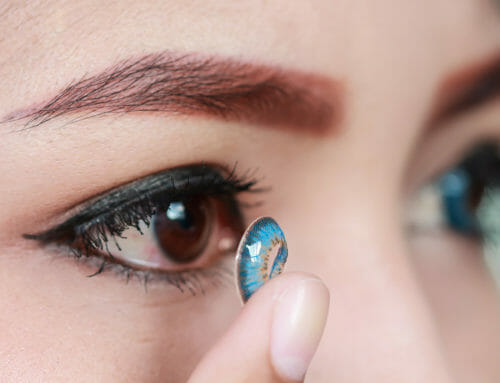
Contact Lens For Keratoconus
Eye conditions are so varied that it can be hard to keep up with all the things that could go wrong with our vision care, and that is why regular exams are advisable. Keratoconus is one condition that an eye surgeon can treat before it progresses further.
The eye disease causes thinning of the naturally round-shaped cornea into a cone-like bulge. A cornea with such a shape leads to distorted vision because light deflects when it hits the sides of the cornea. The condition is progressive with the shape of the cornea getting more irregular, resulting in astigmatism and near-sightedness.
It is not clear what causes the condition, but some genetic predispositions such as asthma have shown susceptibility to keratoconus.
Corneal cross-linking is the most common option for its treatment, but the use of contact lenses is also a viable solution that an eye surgeon may consider. It is possible to get contact lenses to treat various stages of keratoconus.
1. Rigid gas permeable
Rigid gas permeable lenses are relatively frequent options for the treatment of keratoconus. An eye doctor fits the lenses over a keratoconus cornea with the material, providing a smooth refractive surface that reshapes the cornea. The process of masking a keratoconus corneal surface with a rigid gas permeable lens is a tedious one that may require tweaking now and then if the condition keeps progressing.
2. Custom soft contacts
The market is currently filled with soft contact lenses that are suitable for mild to moderate cases of keratoconus, which you can customise to cater to your specific needs. New technologies have allowed improved designs that correct vision distortion, which has not always been possible with older versions of soft lenses. Some wearers prefer them to gas permeable lenses because they offer enhanced comfort.
3. Hybrid lenses
With this type of contact lens, a patient gets a bit of RGP and soft contact. The ultra-comfort is provided by the soft contact lens “skirt” while the centre has the visibility and optic quality of a gas permeable lens.
4. Piggybacks
An eye surgeon can also recommend using a piggyback technique to fit lenses for keratoconus treatment. The process entails fitting an RGP lens that is responsible for clearing distortion over a soft contact lens that acts as a cushion to make the wearer more comfortable.
An eye doctor in London will, of course, consider the corneal health, comfort as well as an ideal fit when picking contact lenses.
Source:
- Eye Health and Keratoconus, webmd.com

About the expert
Mr Hamada | Consultant Ophthalmologist and Corneal Surgeon
MD, MSc, DO (hons), FRCSEd, FRCOphth I am Samer, founder and consultant ophthalmic surgeon with over 20 years’ experience in ophthalmology. I am a world-renowned specialist in cornea, cataract and refractive surgery. I’m not only a leading surgeon but also the only dual fellowship trained in corneal diseases in children from reputable institutions in the UK. At Eye Clinic London I work closely with other consultant ophthalmologists, optometrists and orthoptists to achieve the best outcomes for our patients. Our main aim is to make sure our patients get the safest and best treatments available to them. We put your safety before anything else so you can rest assured that if you choose us you will be in the best and safest hands.



